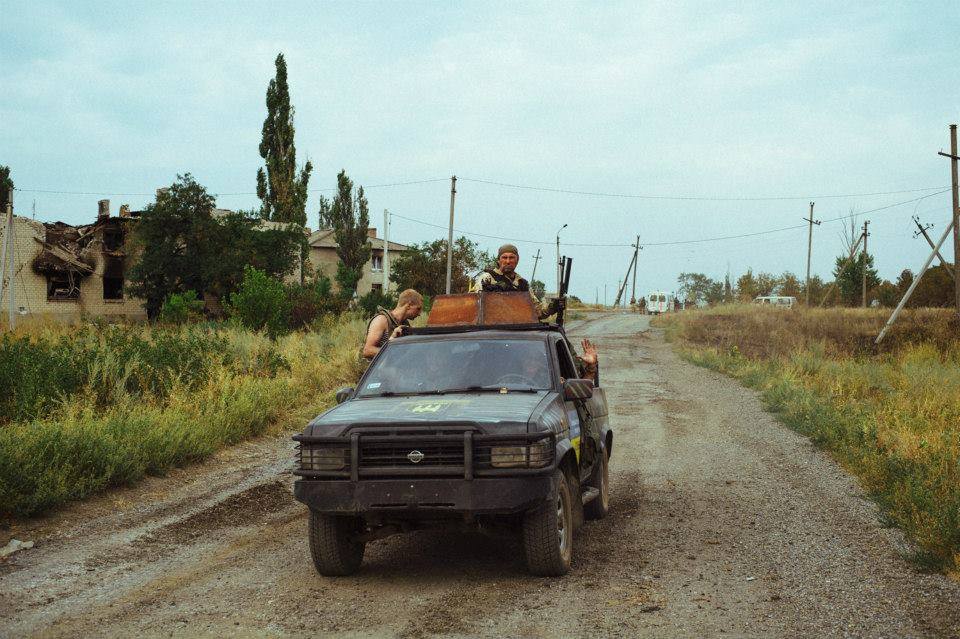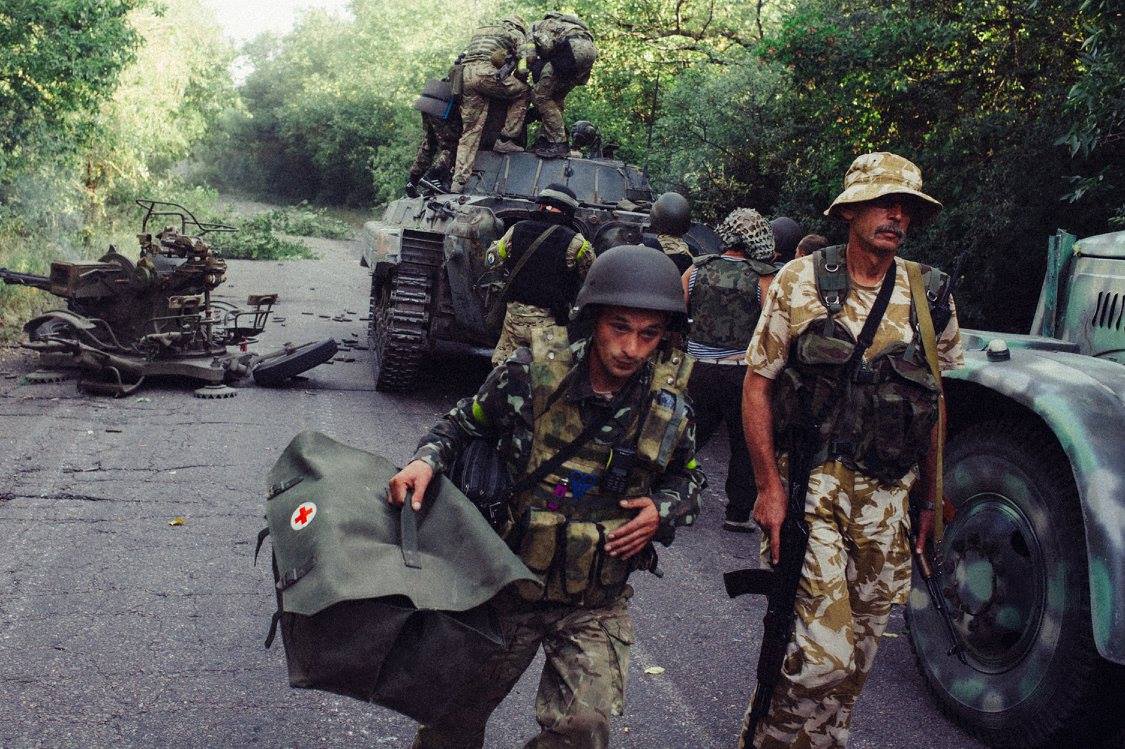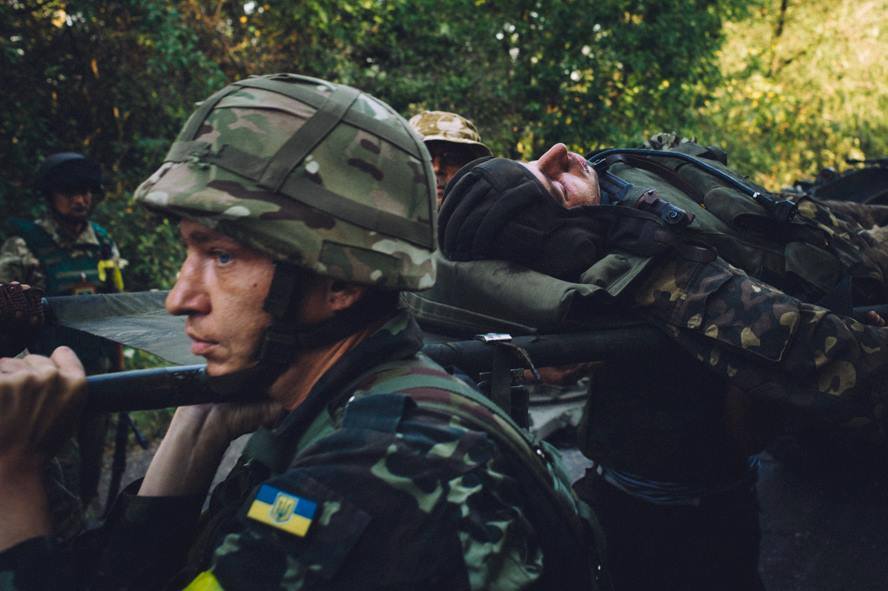On 14 August 2017, Ukraine’s General Prosecutor’s Office (GPO) released the results of a probe into Ukraine’s largest military defeat - the battle for Ilovaisk. They not only shed light on the responsibility of the Ukrainian higher military command for the catastrophe dubbed as a “nation-wide tragedy” inside the country but provide proof of a direct Russian invasion, with the help of forensic and military examinations involving 31 army experts.
Russia has been persistently denying its involvement into Donbas’s turmoil from the very beginning, naming it as a civil war.

In the summer days starting from 24 August, Ukraine’s Independence Day, to 29 August 2014, Ukrainian army and volunteer battalions found themselves entrapped by Russian forces near the small town of Ilovaisk. A plan to let the Ukrainians escape was negotiated with the Russian side, but the latter opened fire at the last moment, killing 366.
In those red-hot August days of 2014, it seemed that Ukraine’s anti-terror operation against Russian-backed militants in eastern Ukraine, which was into its fifth month, would be finished in a couple of weeks, considering the rapid, successful advancements of the Ukrainian Army in all directions.
Ilovaisk is not only an important railway hub but the northern gates to Donetsk, the capital of the “Donetsk People’s Republic” (DNR), the unrecognized Russian proxy statelets that proclaimed independence after a fake referendum, along with its twin, the “Luhansk People’s Republic.” From the military point of view, it was natural that both sides were eager to keep it under their control.
In those days, the General Staff of the Ukrainian Army, having full knowledge of the risks of conducting full-scale military operations in the highly-populated areas of industrial Donbas, took the decision to dismember and encircle the so-called “Donetsk and Luhansk People’s Republics.” The operation to forcing the separatist troops out of Ilovaisk was inevitable.
As of mid-August, the Ukrainian Airborne units fulfilled their part of the overall operation by taking under control the commanding heights near Nyzhnia Krynka village and the city of Zhdanivka on the south of Donetsk, so to complete the encirclement of the Russian-led militants at the capital of the “DNR,” the government forces should have taken Ilovaisk.
Direct Russian invasion
The GPO report explains that the decision of the Ukrainian command to enter Ilovaisk was made based on previous successful military operations to gain control over the crucial supply routes and blockade the capitals of the “republics.” While these military operations were being conducted, the regular units of the Armed Forces of the Russian Federation invaded Ukraine through the breaches in the borderline near Krasnodon in the Luhansk direction and near Amvrosiivka in the Donetsk direction, with only purpose of not allowing the separatist forces be defeated. The invasion took place on the night of 24 August.
Before this investigation went out, Ukrainian top officials repeatedly claimed about these facts but without applying the legal framework. Overall, in the three years after the battle of Ilovaisk, the Ukrainian society has been torn apart by many contradictory questions. Pro-government bloggers, journalists stated that the military operation at Ilovaisk was a pure initiative of the volunteer battalions which sprung up to help fight the Russian-backed insurgency in Donbas in the mayhem following Russia’s occupation of Crimea. The military report makes it clear that this isn’t true. Additionally, the leaders of the volunteer units blamed the local authorities for compromising with Moscow to oppress their movement. The authorities provided confusing answers to these questions, claiming that only Russians must have been blamed for the military tragedy. The report clears this up as well, giving solid testimony not only to the extent of the Russian invasion but also to the mistakes of the Ukrainian leadership.
Overall, in the three years after the battle of Ilovaisk, the Ukrainian society has been torn apart by many contradictory questions. Pro-government bloggers, journalists stated that the military operation at Ilovaisk was a pure initiative of the volunteer battalions which sprung up to help fight the Russian-backed insurgency in Donbas in the mayhem following Russia’s occupation of Crimea. The military report makes it clear that this isn’t true. Additionally, the leaders of the volunteer units blamed the local authorities for compromising with Moscow to oppress their movement. The authorities provided confusing answers to these questions, claiming that only Russians must have been blamed for the military tragedy. The report clears this up as well, giving solid testimony not only to the extent of the Russian invasion but also to the mistakes of the Ukrainian leadership.
The investigation claims that Ukraine was invaded by nine battalion tactical groups of the Armed Forces of the Russian Federation:
- about 3500 personnel;
- 60 tanks;
- 320 AFVs and APCs;
- 60 howitzers;
- 45 mortars;
- 5 anti-tank guided missiles.
As a consequence of the invasion, the volunteer battalions along with units of Armed Forces of Ukraine were trapped in Ilovaisk. The General Staff had no real reserves to send there to help the besieged. There were only two possible options - to fight their way out or lay down the arms. The commanders of ATO forces chose the second one.
The investigation confirms that Viktor Muzhenko, the Chief of the General Staff, started negotiating with the deputy chief of the General Staff of the Russian Federation Nikolai Bogdanovsky to grant safe corridors for the escape of Ukrainian military units. There were 12 phone calls between them. Russia agreed to guarantee the safe passage by the negotiated routes.
On August 29, when the convoys of ATO forces began to move, the Russian soldiers shot them down like at a shooting range. Additionally, the Russian party had been constantly changing the exact time of the Ukrainian forces’ withdrawal in order to buy time to prepare their firing positions. Ukrainian soldiers who survived gave much evidence to this fact.
As a result of the sneak attack:
- 366 Ukrainian soldiers were killed;
- 429 were injured;
- 300 were taken prisoner;
- later, the majority of the prisoners were exchanged, eight are still kept in the basement prisons in Donetsk;
- the military hardware losses of the Armed Forces of Ukraine are estimated at $12 mn.
Who is guilty?
The report says that a direct Russian military invasion and further war crimes is the main cause of the tragedy. At the same time, there were domestic factors behind the Russian invasion and consequent occupation of some areas of Donetsk and Luhansk oblasts: the low level of the operational status of the Armed Forces of Ukraine under President Viktor Yanukovych
, numerous cases of desertion, and non-critical mistakes made by the commanders of ATO forces in planning and conducting military ops.
As a consequence of the investigation, 55 persons have been prosecuted (among them 32 citizens of the Russian Federation, including Russian Defense Minister Sergei Shoigu, his deputy Valery Gerasimov, and nine generals) for aggressive actions and other war crimes against Ukraine. 22 persons have been convicted for the above-mentioned crimes (among them eight citizens of the Russian Federation). The Chief Military Procurator’s Office of Ukraine transmitted information about the collected evidence on war crimes (including tragic events in Ilovaisk) to the International Criminal Court to open criminal proceedings against Russia.
Criticism of the report
However, the report has received lots of criticism. At a press conference held three days after it was released, soldiers, their relatives, and human rights activists stressed that the Ukrainian military leadership made more mistakes than the probe admitted. Vitaliy Pogosian, a lawyer of the SICH human rights group, said that the report did not take into account the conclusions of the Temporary parliamentary commission which also investigated the Ilovaisk tragedy from September 2014.
Pogosyan said that the report didn’t establish who from the Ukrainian military command was responsible for not ensuring that the troops inside the cauldron had enough support and whether somebody had given the order to retreat in the first place. He noted that Russia is undeniably guilty, but the Russian troops were entrenching themselves and bringing in the military hardware for 5 days before the tragedy, which is something that the Ukrainian command had to know and take appropriate action.
Andriy Senchenko, a Ukrainian MP who headed the temporary parliamentary commission on Ilovaisk, also said he is not fully satisfied with the report. In a comment to RFE/RL
, he said that the events of Ilovaisk are directly connected to Russia’s artillery shelling of the 140-km strip of the Ukrainian-Russian border, which started much earlier than Ilovaisk and were a preparation for the mass invasion in late August 2014. As a result of the shelling, the whole length of this border was guarded by less than a thousand of servicemen.
The former MP says that the report published by the GPO concerns only one episode of the Ilovaisk tragedy, but many other questions concerning it remain, in particular how it was seized. Senchenko says that this should have been a military operation, but instead, volunteer units of the Interior Ministry were sent, armed only with small arms and mortars. He notes that there were two attempts to de-block the Ilovaisk cauldron which nobody wants to talk about, where one company of the 51st brigade and a tactical team of the 92nd brigade were sent against a much more numerous enemy, 3,500 Russian servicemen. Both were defeated.
Senchenko stresses that the Ukrainian authorities talk about the “green corridor” in Ilovaisk and attempt to break through in order to avoid naming the total personnel losses of the Ukrainian army in the battles for Ilovaisk.
One year ago, he estimated that the total personnel losses at Ilovaisk may amount to 1,000 people.
The military prosecutors of Ukraine continue gathering evidence related to the battles in Ilovaisk.
Written with contributions by Alya Shandra
Read also:
- Two years after the Ilovaisk tragedy, guilty not found
- Ilovaisk and the Russian invasion
- Heroism and tragedy in Ilovaisk
- Ukrainian Donbas battalion commander: 1,000 dead in Ilovaisk
- The Ilovaisk hellhole
- Journalist loses husband in battle for Ilovaisk
- Poroshenko discusses Ilovaisk and Ukraine's army
- Victor Tregubov: Analysis of the inferno at Ilovaisk
- The state of Ukraine's Armed Forces










